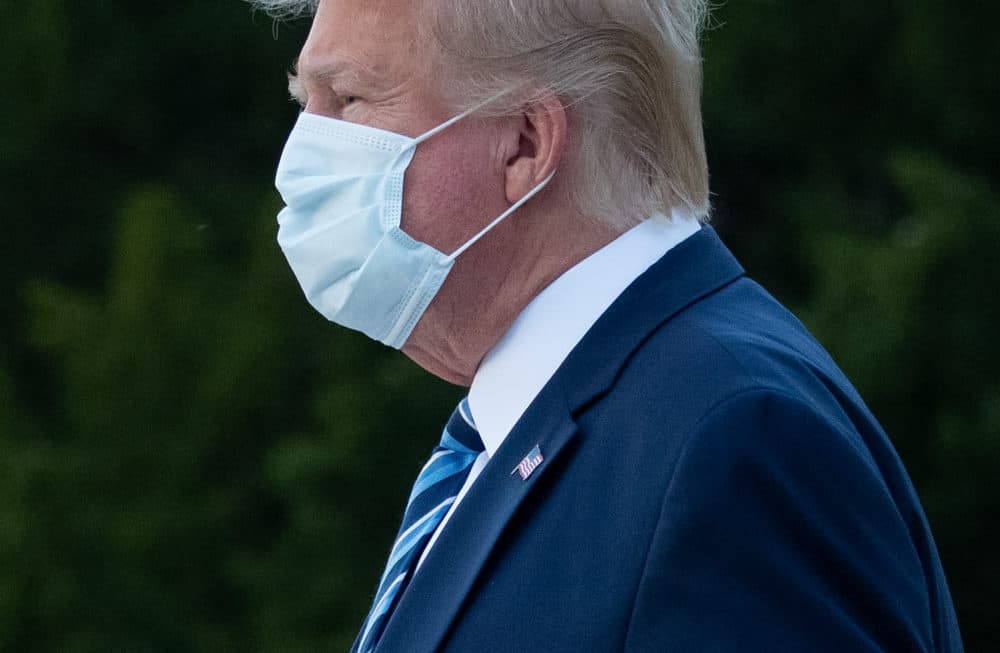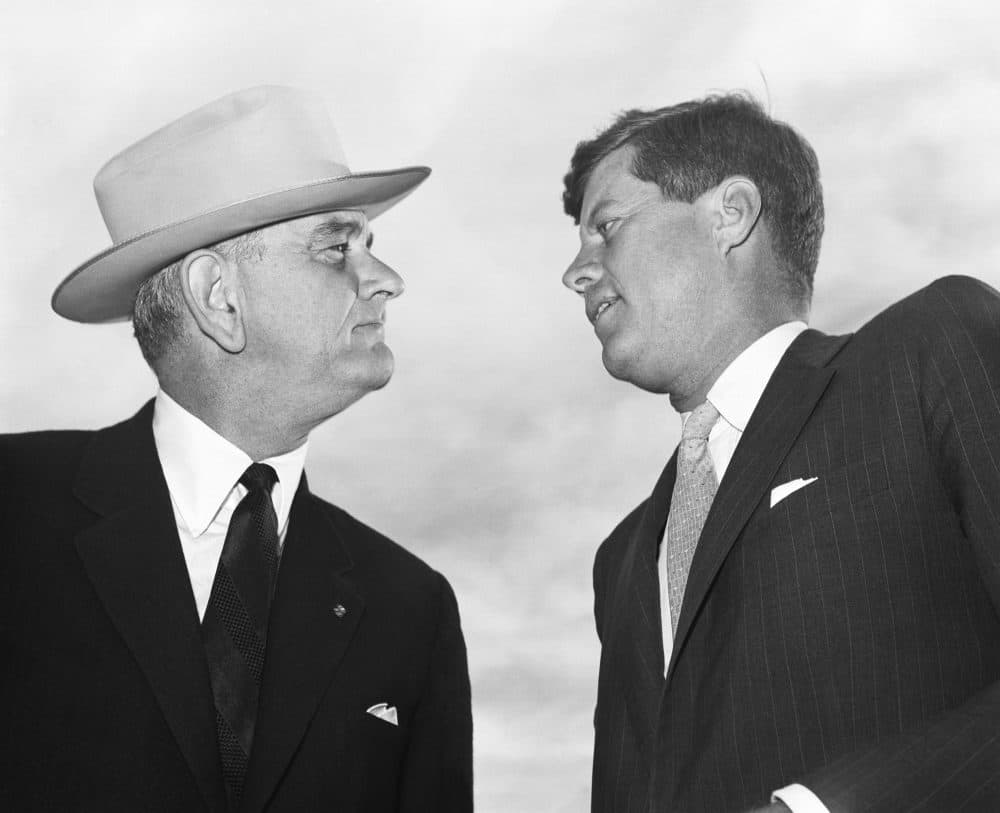Advertisement
Commentary
Other Presidents Have Lied About Their Health. But Trump’s Cover-Up Is Immoral

President Donald Trump’s ongoing dissembling about his own COVID-19 will likely go down as the most shameless cover-up of its kind in American history, given the way he’s whitewashed the wider pandemic. But it’s hardly the first concealment of the medical maladies of our highest-profile public figures.
In 1893, President Grover Cleveland took to a friend’s private yacht for the surgery that removed a cancerous lesion from his mouth, then swore his doctors to secrecy and told his spokesman to lie.
When President Woodrow Wilson had a disabling stroke in 1919, those around him never let on that his wife and doctor were essentially running the country.
And of course, President Franklin Roosevelt, who’d been hoodwinking his fellow Americans about needing braces to make his paralyzed legs work, had no problem continuing the duplicity when it came to the congestive heart failure, limited lung capacity, lack of oxygen to the brain and other ailments that would kill him at the start of his fourth term.
Looking back, it’s hard to find a commander-in-chief who -- in a bid to seem strong, if not virile -- didn’t tell at least mid-sized whoppers.
Looking back, it’s hard to find a commander-in-chief who — in a bid to seem strong, if not virile — didn’t tell at least mid-sized whoppers. But there are two other cases of high-level deceit that are lesser-known and more of a precedent for our current fibber-in-chief.
The first involves America’s most storied political dynasty, the Kennedys, when John was vying to be the Democratic nominee for president in 1960. He knew from the first that Texas Senator Lyndon Johnson would be his biggest obstacle. As the clock to the nominating convention wound down, Johnson was rightfully convinced that the Kennedys were planting doubts about whether he was healthy enough to serve after a near-fatal heart attack in 1955. So LBJ beat them to it.

Jack is a “little scrawny fellow with rickets,” he whispered to a reporter from the Chicago Daily News. Making a circle with his fingers, Johnson asked, “Have you ever seen his ankles? They’re about so round.” His sleuths in the pharmaceutical and medical communities, meanwhile, confirmed that Kennedy had Addison’s Disease, a serious condition where the adrenal glands aren’t producing enough hormones. “Doctors,” a senior LBJ aide announced at a press conference, “have told me he would not be alive if it were not for cortisone.”
If LBJ thought his adversaries naïve and unready, the Kennedys’ response to his medical charges made him think again. Bobby, his big brother’s bare-knuckled campaign manager, insisted Jack “does not now nor has he ever had an ailment described classically as Addison’s Disease.” Bobby proceeded to release a statement from JFK’s doctors proclaiming his health “excellent” and a page from his political biography attesting to the family’s openness in acknowledging his “adrenal insufficiency.”
Advertisement
The denials were a lesson in hair-splitting and the Kennedy philosophy of doing what it takes to win. Jack did, in fact, have Addison’s. His adrenal glands were not only producing insufficient hormones, they were wilting away. He had been getting cortisone injections for a decade, with Papa Joe Kennedy going so far as to stash emergency supplies of the drug in safety deposit boxes wherever JFK traveled. The counterattack had worked and LBJ was compelled to disavow his aide’s allegations and to eat crow. It was a lesson that would be absorbed by a young New York lawyer named Roy Marcus Cohn, who in later years became Donald Trump’s tutor in take-no-prisoners politics.

The second case of medical misleading didn’t involve a president but is even more resonant today because it featured the man whose playbook our 45th president has been following for decades: “Low-Blow” Joe McCarthy.
Rumors of McCarthy’s boozing had been rampant since Wisconsin voters first sent him to the Senate in 1946, but he denied it. It is only now, since Bethesda Naval Hospital released the senator’s full medical records for my book on McCarthy, that we know for sure about his alcoholism and can trace its impact on the Red-baiting crusade that held this country in his sway in the 1950s.
His physicians at Bethesda had, in fact, been slow to see the senator’s drinking as a problem. In the 1940s, they gave him whiskey along with sleeping pills to help him rest during his hospital stays, and as late as 1952, they poured him a shot glass a day. They accepted his explanation that he “drinks socially.” By the middle of 1956, however, he admitted to his doctors that “alcoholic intake is three highballs daily.” New symptoms — tremors in his tongue and upper body, limping from a foot drop, liver damage — also pointed to alcoholism. “Patient appears to be under influence of alcohol,” his nurses wrote during his hospitalization in the fall. “Appears out of contact most of the time — thinks he is at home — then at a cocktail party ... wants to ‘go downstairs to see three people about his campaign.'”
To most, the lesson of the Kennedys and McCarthy would be that lying isn't worth it, if only because history eventually will expose you.
He was back in the hospital in December for a 20-day stay and discharged on Jan. 3, 1957, so he could attend the opening session of the Senate. Doctors were by now transparent in pinpointing his problems: “delerium tremens [sic] and early alcoholic cirrhosis.” His nurses were clearer still: “Patient extremely violent — kicking, hitting biting etc ... ‘will investigate everyone.’”
Nobody close to him was surprised by McCarthy’s death in 1957. His refusal to eat — or to stop drinking — suggested he’d lost the will to live. What is less clear is what actually killed him. His doctors and his death certificate said it was acute hepatitis, “cause unknown.” His hospital records make clear it was alcohol. How could his team of esteemed Navy doctors get so wrong this final judgment? Most likely, they decided that hepatitis was just the right vanilla verdict since his liver was diseased, and pointing to that spared his family the pain of publicly acknowledging his chronic and perhaps suicidal drunkenness.
To most, the lesson of the Kennedys and McCarthy would be that lying isn't worth it, if only because history eventually will expose you. But to a serial fabulist like Donald Trump, it's more about how long you can get away with the deception.
